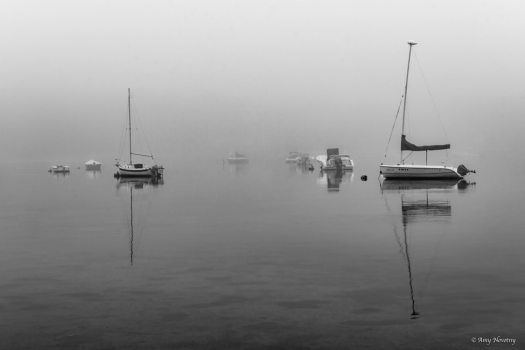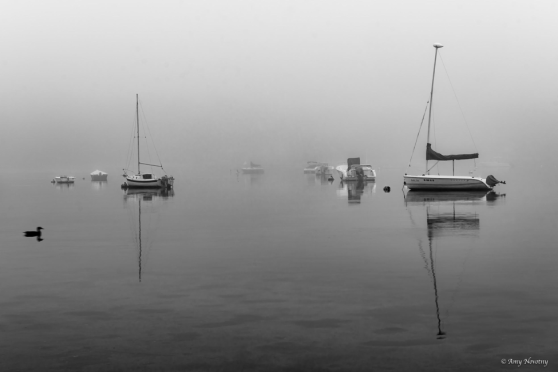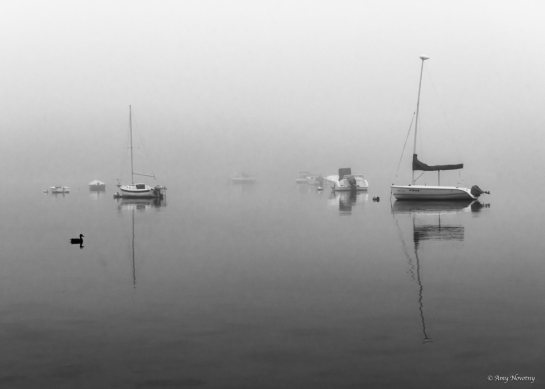By Amy Novotny
Knowing when to switch to manual mode can be difficult these days with digital SLR cameras making it easy to capture images in Aperture or Shutter priority modes. It is often taught to use Aperture priority for controlling depth of field in landscape photography and Shutter priority for fast moving scenes including animals or sports. However, at times, it is desirable to control both depth of field through the aperture and the shutter speed to produce an image.
As a photo guide for Arizona Highways PhotoScapes, I was assisting instructor Beth Ruggiero-York with the Photograph the Charm of Cape Cod workshop this past September. We were photographing a beautiful boat scene in the early morning fog that started out so dense that the boats were hardly visible. Participants started out in Aperture mode since the scene was still and they could control the depth of field to capture both the foreground and background in focus. ISO was set at its lowest setting to reduce noise. Because the light was so low in this setting, the camera adjusted the shutter speed to longer durations to be able to capture the scene at the correct exposure. This worked extremely well since there was minimal to no breeze and the water was calm.

Nikon D750, ISO 100, 70mm, f/8.0, ⅕ sec.
Soon, however, a duck glided into the scene and changed everything. Now, there was movement that needed to be captured, but if the same settings were used, the duck would be blurry as shown below. The shutter, in this case, was open too long to freeze the motion of the duck.

Nikon D750, ISO 100, 70mm, f/8.0, ⅕ sec.
The shutter speed had to be increased in order to capture a sharp, in-focus duck. This was a great time to switch to Manual mode. I could keep the same depth of field that I had previously used because I wanted all the boats in focus but I wanted a faster shutter speed of 1/160 to freeze the slight gliding movement of the duck. Manual mode allowed me to set both of these to what I desired and I could then adjust the ISO to allow for the correct light metering and exposure. It worked and I was able to get all the elements of the image sharp, in-focus and with the exposure I was looking for.

Nikon D750, ISO 1600, 70mm, f/8.0, 1/160 sec.
This is just one example of many that would encourage me to switch to Manual mode quickly during a photography shoot.
Amy Novotny is a Volunteer Photo Guide with Arizona Highways PhotoScapes.
Twitter: @amynovotnyaz
Instagram: @anovotn
http://www.amysimpressions.com
Images taken while assisting as a Volunteer Photo Guide for Arizona Highways PhotoScape’s Photography the Charm of Cape Cod workshop taught by instructor photographer Beth Ruggiero-York in September 2017.
